In the realm of soccer, every position holds a unique significance, contributing to the collective network of teamwork, strategy, and passion that defines the beautiful game.
Among these positions, the striker, often considered the epitome of attacking prowess, stands as the focal point of a team’s offensive efforts.
With their instinct, agility, and goal-scoring prowess, strikers possess an artistry that can captivate audiences and change the course of a match in an instant.
In this article, we delve into the essence of the striker in soccer, exploring their role, characteristics, and the impact they have on the outcome of a match.
We’ll uncover the secrets behind their ability to find the gaps in defenses, their unmatched anticipation, and their capacity to turn the tide of a game in a single moment.
By examining the skills and attributes of these scoring maestros, we aim to shed light on the fascinating world of the striker and the artistry they bring to the pitch.
- Where is the striker positioned on the soccer pitch?
- What is the role of a striker?
- What physical and mental characteristics make for a great striker?
- What's the difference between a striker and a forward?
- Which players are regarded as the best strikers in soccer history?
- Who are the most dominant strikers in today's modern game?
- Closing thoughts
Where is the striker positioned on the soccer pitch?
In the world of soccer, the striker assumes a crucial role as the player positioned closest to the opponent’s goal, with the primary objective of orchestrating goal-scoring opportunities for their team.
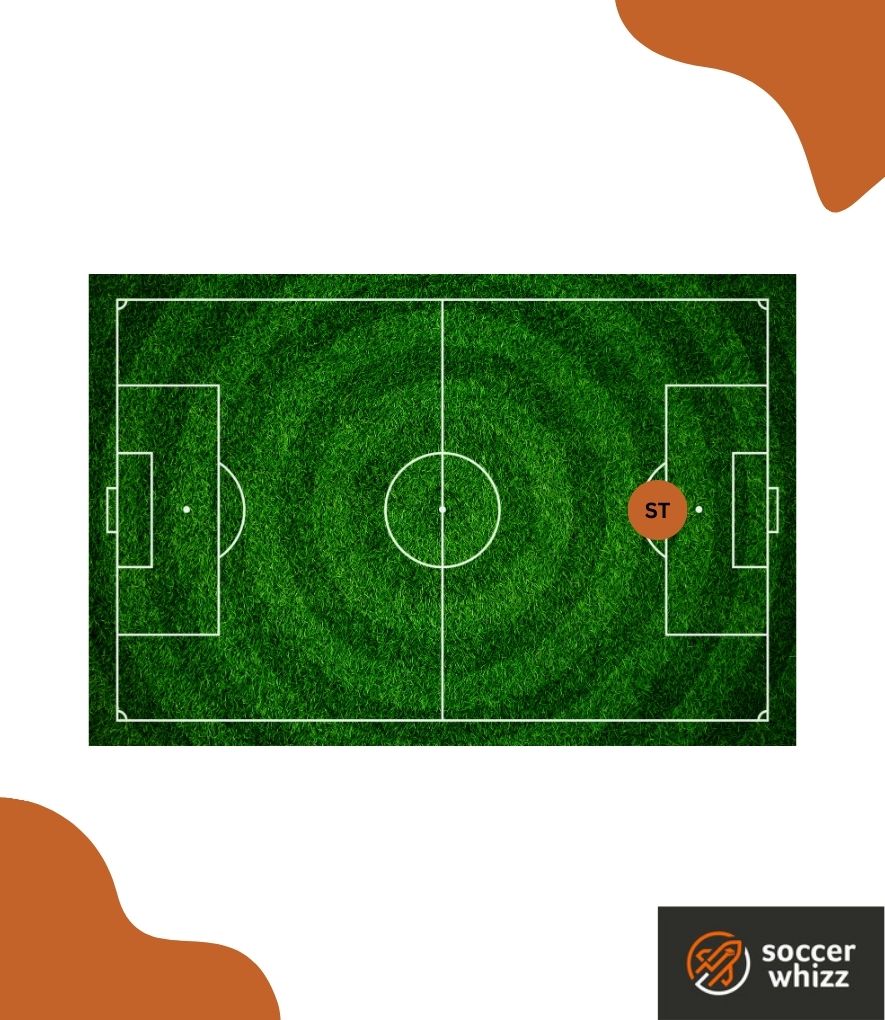
The term “striker” stems from their defining attribute of striking the soccer ball while attempting to find the back of the net.
Occupying a strategic position nearest to the adversary’s goal, the striker not only occupies the foremost spot on the field but also tends to operate centrally, allowing them to effortlessly cover the entire width of the soccer pitch and maximize their effectiveness.
The positioning of the striker further forward than any other player is a deliberate tactical choice, driven by the imperative responsibility of netting the most goals for the team.
It follows a logical pattern, as the player entrusted with the task of scoring goals should naturally position themselves in the area most conducive to receiving opportunities to strike the ball into the goal.
What is the role of a striker?
This position is mainly tasked with executing the following duties:
1. Consistently finding the back of the net
The primary and paramount responsibility of a striker lies in consistently putting the ball in the opposition’s net.

Without this ability, their tenure with the team may be short-lived.
Strikers are chosen for their role based on their proven proficiency in scoring goals, making them crucial contributors to the team’s success.
Scoring goals not only requires the striker to be adept at finding the net but also demands a consistent display of their goal-scoring prowess.
While any player can occasionally score for their team, the striker’s purpose is to surpass all others in terms of regularity and frequency of goal-scoring.
2. Positioning for receiving passes
The second role of a striker revolves around their availability to receive passes from their teammates.
Soccer predominantly relies on passing as a fundamental aspect of gameplay.
Whenever a player possesses the ball, they instinctively search for a teammate ahead of them to make a pass.
It is the duty of the striker to position themselves in a manner that enables them to be the most accessible option for a pass.
3. Creating space for team mates
In addition to seeking open spaces and being available for passes, a striker bears the responsibility of generating space for their teammates.
Soccer is an inherently collaborative sport, where the role of the striker extends beyond personal objectives.
A vital aspect of a striker’s duty involves facilitating the success of their teammates by manipulating the movements of opposing defenders.
An astute striker recognizes when their fellow player has an opportunity to attack the opposition’s goal and takes measures to divert defenders’ attention away from their intended targets.
By strategically moving close to defenders or making calculated runs past them, the striker aims to lure the defenders and create open areas for their teammates to exploit.
4. Taking initiative and shaping the game
Confidence and a proactive mindset are crucial attributes for a striker, who must fearlessly seize opportunities to shape the game in favor of their team.
One of the inherent roles of a striker is to actively pursue the ball and instigate action that benefits their team.
They must assume the responsibility of relentlessly seeking opportunities to make a difference whenever the chance arises.
A striker must embrace their duty of being an active catalyst, consistently searching for ways to impact the game positively and contribute to their team’s success.
5. Creating scoring opportunities for others
The final role of a striker involves selflessly creating scoring chances for their teammates.
Beyond creating space, a striker should continually assess if they can set up their fellow players for goal-scoring opportunities.
Positioned closest to the opponent’s goal, the striker often finds themselves in a prime position to create chances for others when they have possession of the ball.
This proximity provides an ongoing opportunity to find avenues for their teammates to score.
A striker’s role demands an unselfish mindset, constantly aware of their teammates’ positions and potential goal-scoring opportunities.
Their objective is to connect the dots, making the most of their positioning and skills to facilitate the success of their teammates.
What physical and mental characteristics make for a great striker?
Impeccable ball control
In the swift and relentless pace of soccer, strikers often find themselves under immediate pressure from surrounding defenders upon receiving the ball.
Hence, the significance of a striker’s impeccable first touch cannot be overstated, as it allows them to maximize each fleeting opportunity on the field.
A striker’s ability to consistently execute a flawless first touch is crucial for capitalizing on these limited moments and making the most of their contributions to the game.
Exceptional shooting prowess
Every time the ball finds its way to their feet, all eyes are on them, eagerly awaiting a decisive goal or an assist.

The capability to consistently score goals demands exceptional technical skill honed through countless hours of practice on the training ground.
Simply relying on natural talent without dedicated practice would not only disappoint the team but also leave the striker unfulfilled.
Demonstrable patience
As previously discussed, the role of a striker often entails a significant burden of responsibility in terms of scoring goals for the team.
However, there are instances in games where goal-scoring opportunities may be scarce, only presenting themselves once or twice throughout the entire match.
In such situations, it is imperative for a striker to maintain composure and refrain from becoming frustrated or anxious due to the perceived lack of chances.
Confidence and composure under pressure
Within the heat of a soccer match, the soccer field can be an overwhelmingly intense and intimidating environment.
Players who have not developed the ability to remain calm under such pressure are more prone to making multiple mistakes.
Among all the players on the team, the striker bears one of the most weighty roles, being the individual expected to score the essential goals that lead to victory.
Exemplary strikers possess the ability to remain composed even during the most demanding moments. Their calmness under pressure stems from their unwavering confidence in their own abilities.
What’s the difference between a striker and a forward?
The primary distinction between a striker and a forward in soccer lies in their positional placement on the field and their respective duties.
A striker assumes a forward position, stationed further ahead than any other player, with the primary objective of scoring goals.
On the other hand, a forward operates behind the striker, assuming a more versatile role that encompasses both goal creation and scoring.
Observing a soccer match, one can readily discern that the striker doesn’t retreat as deeply into the field as their teammates.
This deliberate positioning is imperative, as the team relies on the striker to remain in an advanced position, perpetually prepared to exploit goal-scoring opportunities.
Conversely, a forward carries the responsibility of not only contributing goals but also generating scoring chances.
They frequently retreat deeper into the soccer field to offer defensive support, acting as a vital link between the midfield and the striker.
This multifaceted role necessitates a forward’s involvement in both offensive and defensive aspects of the game, contributing to the team’s overall dynamics.
Which players are regarded as the best strikers in soccer history?
Here are three names worth mentioning:
Pele
Pele, without a doubt, stands as the epitome of excellence among all the strikers who have graced the Earth and participated in the captivating game of soccer.
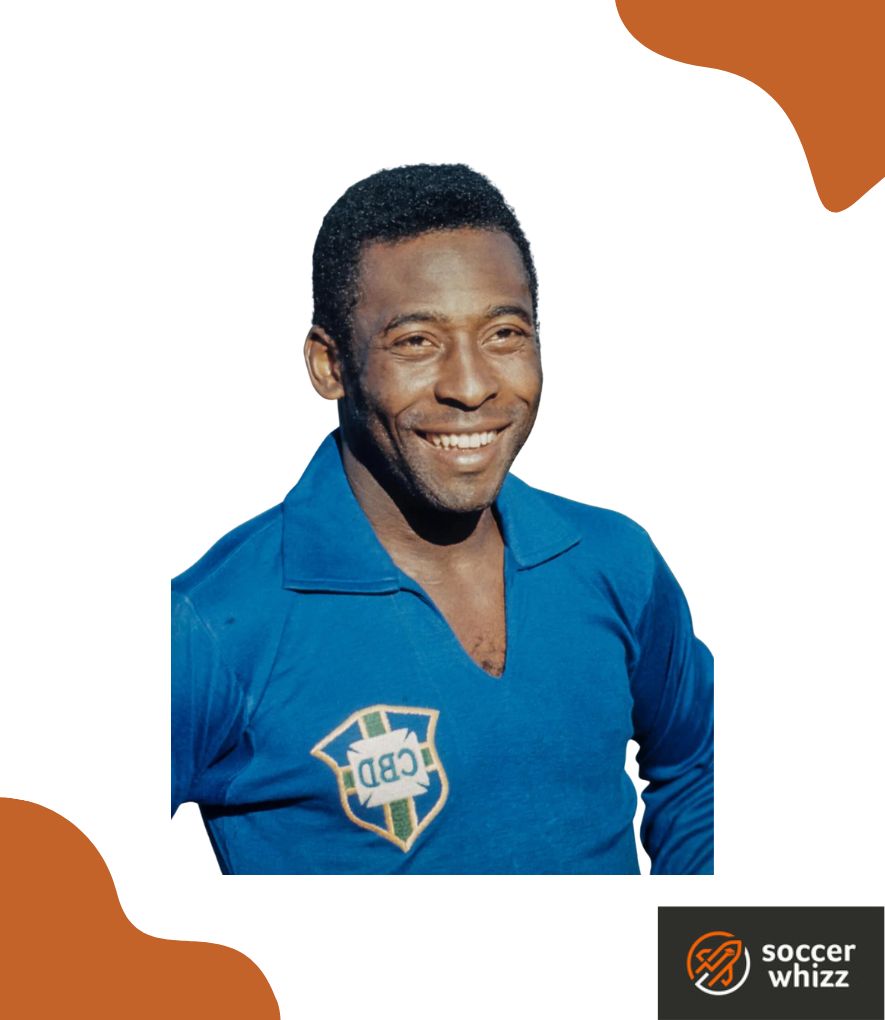
His name is synonymous with an extraordinary array of accomplishments, as he reigns as the record-holder in nearly every conceivable category.
Pele holds the esteemed titles of Brazil’s all-time leading goal scorer and Santos’ leading goal scorer.
In addition, he boasts the remarkable achievement of scoring the most league goals in history (i.e. 604 according to the IFFHS), as well as the highest tally of total goals (i.e. 1,281).
Ronaldo Nazario
“The phenomenon” himself, the original Ronaldo, undeniably ranks among the elite echelon of the greatest and most influential strikers in the storied history of the FIFA World Cup.

As a three-time World Player of the Year, Ronaldo’s prowess on the grandest stage is exemplified by his remarkable record as the tournament’s 2nd best all-time leading goal scorer, having netted an impressive tally of 15 goals.
Unless the likes of Lionel Messi or Cristiano Ronaldo astound the world in America at the 2026 FIFA World Cup tournament, the original Ronaldo appears destined to retain his prestigious position in the annals of football history for many decades to come.
Eusebio
Eusebio, undoubtedly, stands as an eternal gem in the realm of Portuguese football, forever cherished and revered.
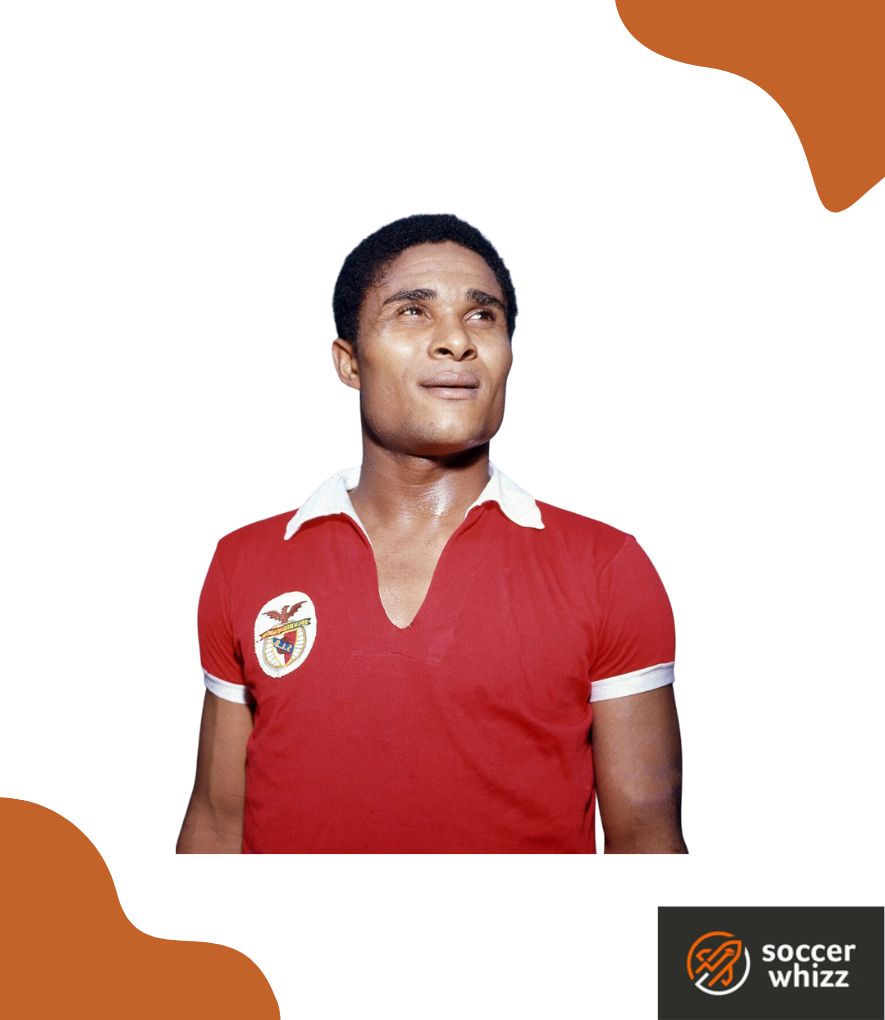
Throughout an illustrious journey, the “Black Pearl” mesmerized with an awe-inspiring record, amassing a staggering total of 638 goals from 614 games.
His remarkable achievements include conquering the European Cup, being bestowed with the prestigious title of European Footballer of the Year, and, most significantly, spreading unadulterated joy to millions of fans across the globe.
Who are the most dominant strikers in today’s modern game?
Only a handful of players fit this description, such as:
1. Erling Haaland
With astonishing audacity, the Norwegian sensation has completely dismantled the defenses of the Premier League, effortlessly surging into double figures within a mere six league matches.

Displaying an extraordinary display of skill, he has notched an astounding four hat-tricks, all while obliterating the single-season goal scoring record with remarkable ease.
Brace yourselves, esteemed Premier League record holders, for Haaland has arrived with an unyielding determination to claim it all.
2. Kylian Mbappe
Amidst the swirling speculation surrounding Mbappé’s future at Paris Saint-Germain and despite the substantial new contract he inked in the summer of 2022, the French prodigy has consistently demonstrated his brilliance within a team that may not always inspire confidence.
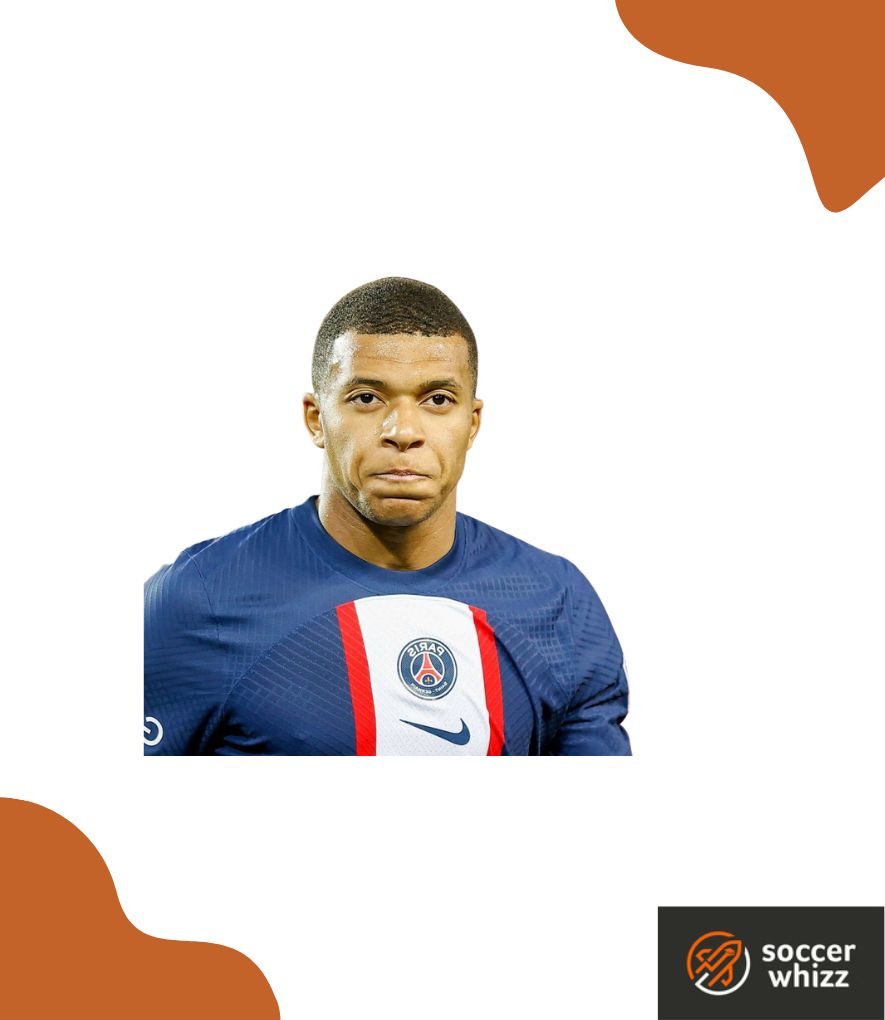
Once again, he has delivered a remarkable tally of 35+ goals, showcasing his unrivaled ability.
When Kylian sets his mind to it, there is simply no halting his unstoppable force, as unfortunate Ligue 1 defenses have come to realize over the course of his illustrious career.
3. Karim Benzema
Unyielding to the passage of time, the robust Frenchman defies expectations, blossoming gracefully on the so-called “wrong side” of 30, much like a superbly aged wine.
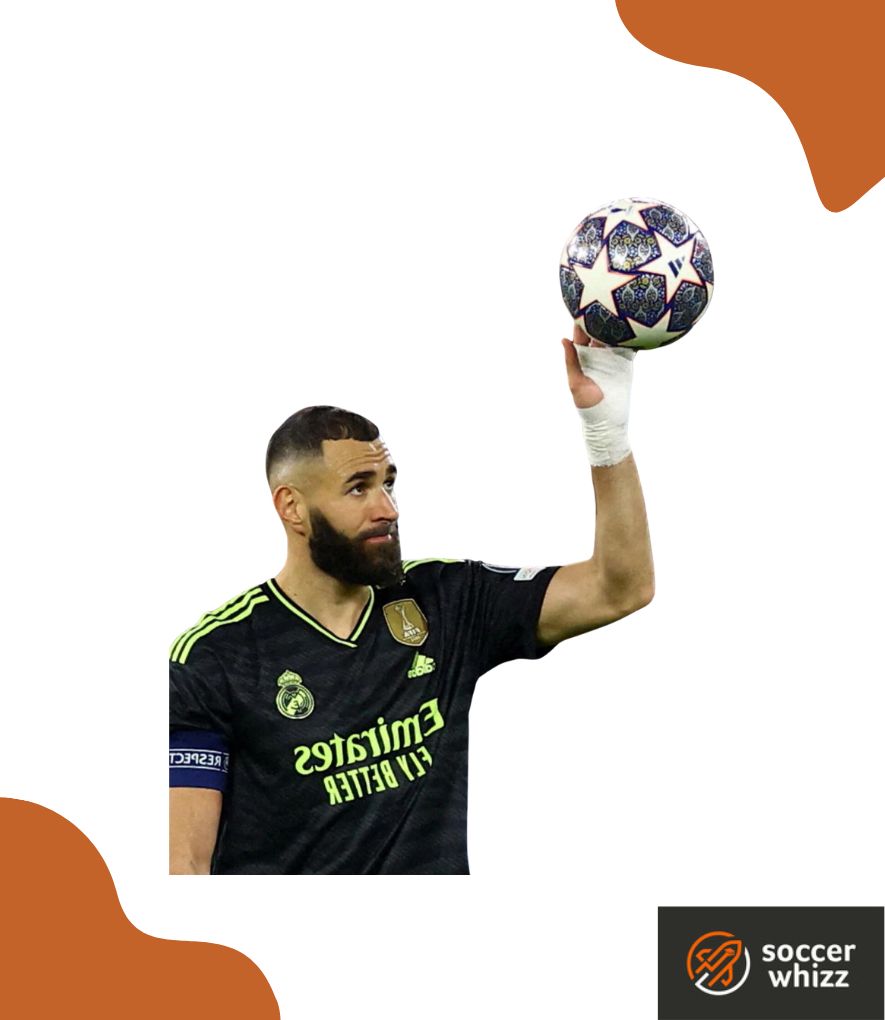
His impeccable marksmanship, formidable strength, unwavering determination, and incredible work ethic remain truly extraordinary for someone of 35 years.
Remarkably, there are no signs of his momentum waning anytime in the foreseeable future.
Closing thoughts
In conclusion, the role of a striker in soccer is undeniably crucial and multifaceted.
As the player positioned closest to the opponent’s goal, their primary responsibility is to consistently score goals for their team.
A great striker possesses exceptional technical skills, superior shooting abilities, and a keen sense of positioning to create scoring opportunities.
Moreover, they must exhibit patience, confidence, and calmness under pressure, as well as the ability to create space for their teammates and contribute to the overall flow of the game.
Whether it be the legendary Pele, the original Ronaldo, or the modern-day talents like Haaland and Mbappé, strikers have left an indelible mark on the beautiful game.
Now before you go, check out some of our other articles on soccer positions, such as:
If you enjoy the content that I create and would like to buy me a coffee, then I’d really appreciate it!
Any money that I earn through this donation will be re-invested into more content for this website.
Additionally, by sending in a donation you’ll also receive a copy of my recently released 190+ page eBook on Soccer Ball Care, as well as be subscribed to our mailing list where you’ll be regularly informed on the latest developments concerning the Soccer Whizz blog.
- Future Icons: Europe’s Emerging Midfield Maestros Set for Glory - December 4, 2023
- Kickstarting a Revolution: How Soccer Transformed the United States Over the Last Four Years - October 7, 2023
- 4-1-4-1 Soccer Formation [Analysis] - September 23, 2023

